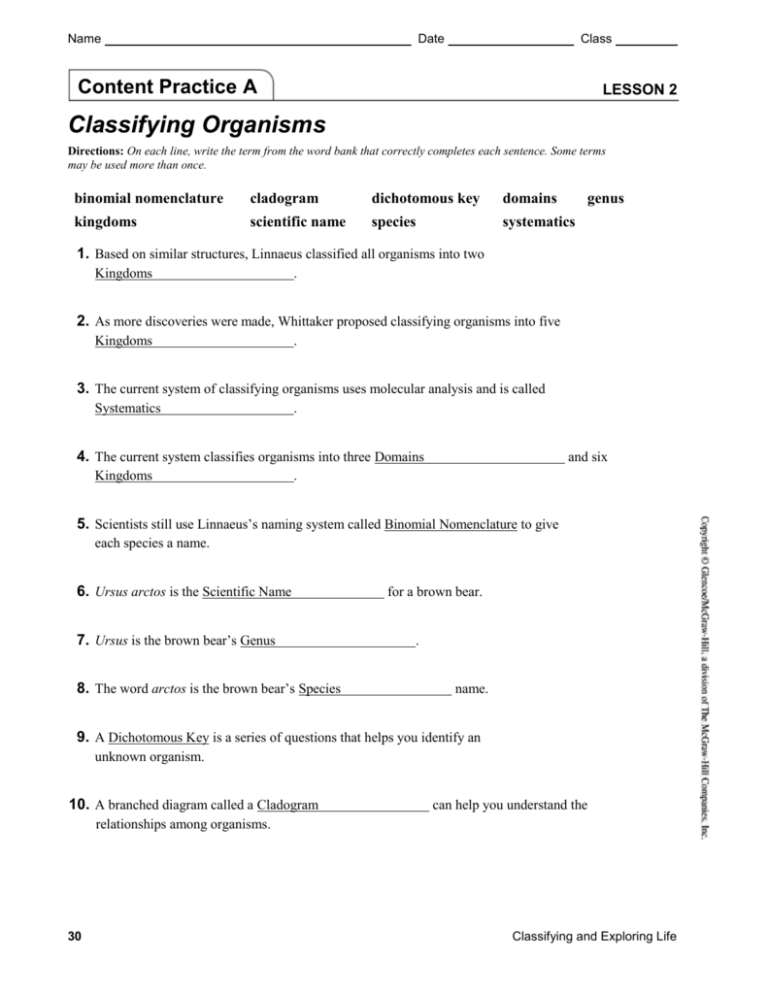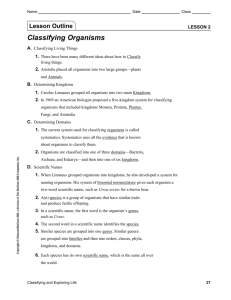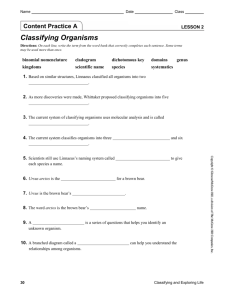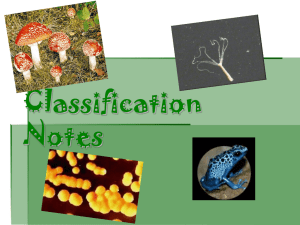Ch. 1 Lesson 2 Content Practice WITH ANSWERS
advertisement

Name Date Class Content Practice A LESSON 2 Classifying Organisms Directions: On each line, write the term from the word bank that correctly completes each sentence. Some terms may be used more than once. binomial nomenclature cladogram dichotomous key domains genus kingdoms scientific name species systematics 1. Based on similar structures, Linnaeus classified all organisms into two Kingdoms . 2. As more discoveries were made, Whittaker proposed classifying organisms into five Kingdoms . 3. The current system of classifying organisms uses molecular analysis and is called Systematics . 4. The current system classifies organisms into three Domains Kingdoms and six . 5. Scientists still use Linnaeus’s naming system called Binomial Nomenclature to give each species a name. 6. Ursus arctos is the Scientific Name 7. Ursus is the brown bear’s Genus 8. The word arctos is the brown bear’s Species for a brown bear. . name. 9. A Dichotomous Key is a series of questions that helps you identify an unknown organism. 10. A branched diagram called a Cladogram can help you understand the relationships among organisms. 30 Classifying and Exploring Life Name Date Content Practice B Class LESSON 2 Classifying Organisms Directions: Answer each question or respond to each statement on the lines provided. 1. Aristotle classified all organisms into two groups—plants and animals. Why did Whittaker propose a five-kingdom system? More organism were discovered that wouldn’t fit in the previous two kingdoms. When new organisms are discovered, they need to be classified. If the current classification system doesn’t work for the new organism, then the system needs to be revamped. 2. What is the current system for classifying organisms called? What evidence does it use to classify organisms? The current system is called Systematics. It uses all the know information about the organism such as cell type, habitat, molecular analysis, way of obtaining energy and food 3. What is binomial nomenclature? A specific way of giving all organisms a unique two part name 4. Explain what makes up a scientific name. The Genus and Species 5. How would you use a dichotomous key to identify an organism? Match descriptions from the key to observable characteristics of the organism 6. How does a cladogram show the relationships among organisms? Cladograms show shared characteristics among organisms the more characteristics they share, the closer the relation. Classifying and Exploring Life 31










